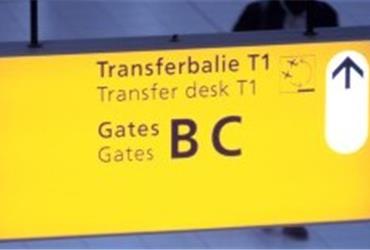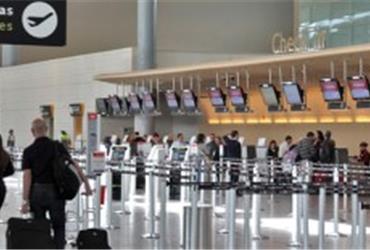Nairobi Airport back in business
After large fire destroyed part of international terminal
At Nairobi's Jomo Kenyatta International Airport, patience is the key word for both airport workers and business travellers. Weeks after a fire destroyed a large part of the international terminal, East Africa's largest aviation hub is back in full swing, be it under different conditions and at a slower pace, says Air France KLM’s regional station manager Evert van der Kaa.
After large fire destroyed the international terminal East Africa's largest aviation hub back in business. At Nairobi's Jomo Kenyatta International Airport, weeks after a fire destroyed the international terminal, East Africa's largest aviation hub is back in business, be it under different but good conditions, says Air France KLM’s regional station manager Evert van der Kaa.

For two days after the blaze, most flights to and from the airport were cancelled. The fire had devastated not only a large building for handling arrivals, many of airlines’ offices had also gone up in flames. As airport workers were picking up the pieces to resume ‘normal’ operations as good as possible, Evert van der Kaa was doing everything he could to find acceptable solutions for stranded tourists and business travellers. “After two days of flight cancellations and of trying to deal with the situation, it was safe to resume our flights again. The airport authorities have really done their best to provide temporary facilities that enable safe operations and adequate handling of arriving and departing passengers and their luggage.”
What can passengers expect?
Adequate is the word. And functional, Van der Kaa stresses. What can arriving passengers expect at Jomo Kenyatta International Airport? “They will leave the aircraft via stairs to the platform. Transportation is provided in touringcars to either a transit area – for travellers with a domestic connection within Kenya – or to an arrivals area in a large tent.” This is the temporary facility of the Immigrations service, where one can obtain visa.
The next stop – the baggage claim area - is again situated in a large tent. “Travellers have to be aware that this is again a makeshift facility. As there is no baggage belt, every passenger will identify his own luggage. Priority baggage of our frequent flyers is placed in a separate section.” After that point, passengers will find arrival facilities – touroperator desks, transportation – in a smart setting: on an open parking lot.
Departing: checkin in time
Departing passengers will find Jomo Kenyatta’s facilities mostly intact. Van der Kaa insists that timely check-in – no later one hour before departure – is even more important than it used to be before the fire. “We need every minute to get aircraft ready for departure, with all passengers and luggage on board.
Airport facilities are more heavily used than before. For example, Air France KLM is now required to share the gate and waiting area with other airlines. Waiting lines at the gate can therefore be slightly longer than usual.” The last stop before passengers can board the aircraft is another tent on the platform. Frequent flyers will be offered a 'temporarily lounge', so they can sit down, and have a bite and a drink in separate section of the tent.
Passengers will have to pack a little bit of patience and flexibility under these circumstances. Evert van der Kaa: “I am convinced that travellers will appreciate and experience themselves that airline and airport staff are working hard to guarantee a smooth arrival, transfer and departure at Nairobi’s Jomo Kenyatta International Airport.”



